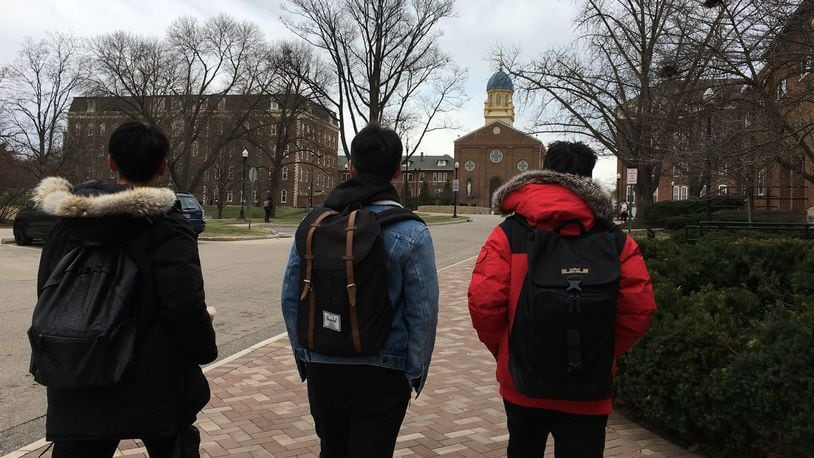“Our strategy moving forward cannot be about doing more with less or the same with less,” Spina said. “Rather, it should be about sharpening our priorities and focus, which could include doing less in some instances or becoming smaller in some areas.”
The university employs more than 3,500 people and has more than 11,000 students, creating an economic impact well beyond the campus.
“The University of Dayton has been a continued partner in the economic development and growth of Dayton,” said Chris Kershner, executive vice president for the Dayton Area Chamber of Commerce. “Their impact not only supports their campus and students, but supports the entire community.”
Spina said the new effort is so the university does not need to make last-minute financial decisions in the future. He said now was the right time for the effort.
UD researches work on tech advancement inside former Georgia grocery
“What we’re finding now is that we really need to step back while we’re healthy, while we have a good operating margin, our credit rating is strong — really go through and exercise where we pull faculty and administrators together and really think through what are the changes we want to make proactively, not re-actively to make certain that the institution can stay strong,” Spina said.
Higher education institutions have collectively faced looming challenges for more than a decade.
“This actually goes back to the Great Recession in 2008 and 2009,” Spina said. “People said, there’s going to be a new normal for higher ed. We’re going to have to adjust to the very different environment. … Really what’s happened in the decade (since) is just an accumulation of just a lot of change in the country and the world.”
Chief among those changes is the decline of college-ready high school seniors. That is especially relevant here in the Midwest, with the population of 18-year-olds in the next decade expected to be down between 10% and 20% in some states, according to Jason Reinoehl, UD’s VP for strategic enrollment management.
Proposed Ohio law would prohibit anyone under 21 in most bars
The new committee won’t consider changing the university’s partnership with the Dayton Arcade, Spina said. UD is one of the anchor tenants in the downtown Arcade, which the city has contributed millions of dollars to help support the project.
UD employs about 690 full-time faculty, 401 part-time instructors, 307 graduate assistants and 2,108 other full-time staff, including the UD Research Institute, according to the UD Fall 2019 Fact Book.
The university has a total of 11,474 full-time undergraduate, part-time undergraduate, graduate and law students, according to the fall report.
The University Budget Alignment Steering Committee and its four working groups will begin work in February.
“Some changes could come this spring or summer, while broader, longer-term decisions will take more time,” Spina said.
The steering committee’s overall responsibility is to develop recommendations. The four groups are the University Revenue Opportunity Working Group, All-University Marketing and Communications Future Working Group, Graduate Academic Program Centrality and Demand Working Group and the University Benefits Working Group.
UD president says Arcade to get students out of ‘UD bubble’
Cilla Shindell, UD executive director news and communications, said the working groups and committee each will have between eight and 14 people, with representation on each group roughly equal between administration, staff and faculty.
Spina said one of the main reasons the committee has been established is so the university can remain affordable He said it is the intention to keep the university’s current annual tuition increase for incoming freshman as close to the current .5% as possible.
“We are not backing away from that commitment. It’s too important for us to make certain that each and every socioeconomic level can see a path to the University of Dayton,” he said. “We’re not going to pass on these challenges to the next generation of students and all of a sudden say tuition is going be incremented by 6 or 8% again.
The steering committee will be in charge of communicating updates with the university and the Dayton community, Spina said.
An internal-only planning exercise is scheduled for Feb.7, according to a release.
UD by the numbers
11,474 students
609 full-time faculty
307 graduate assistants
401 part-time instructors
2,108 full-time staff
Source: UD Fall 2019 Fact Book
About the Author
